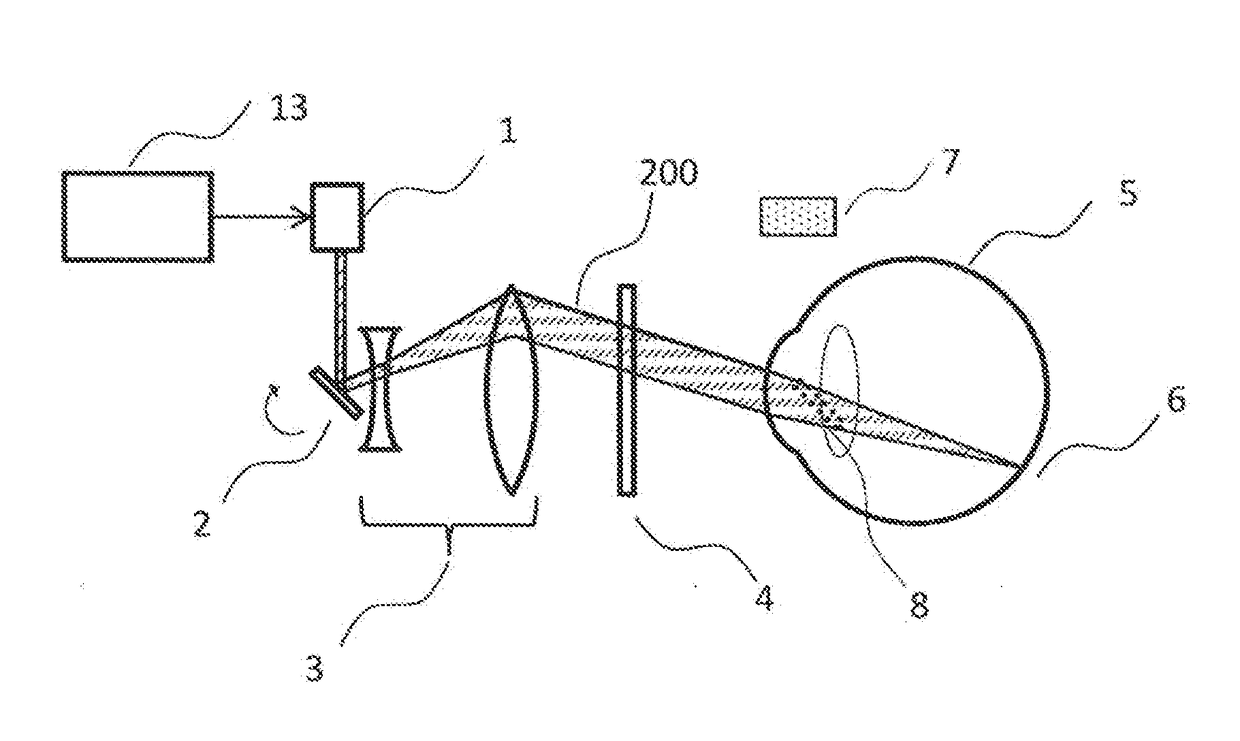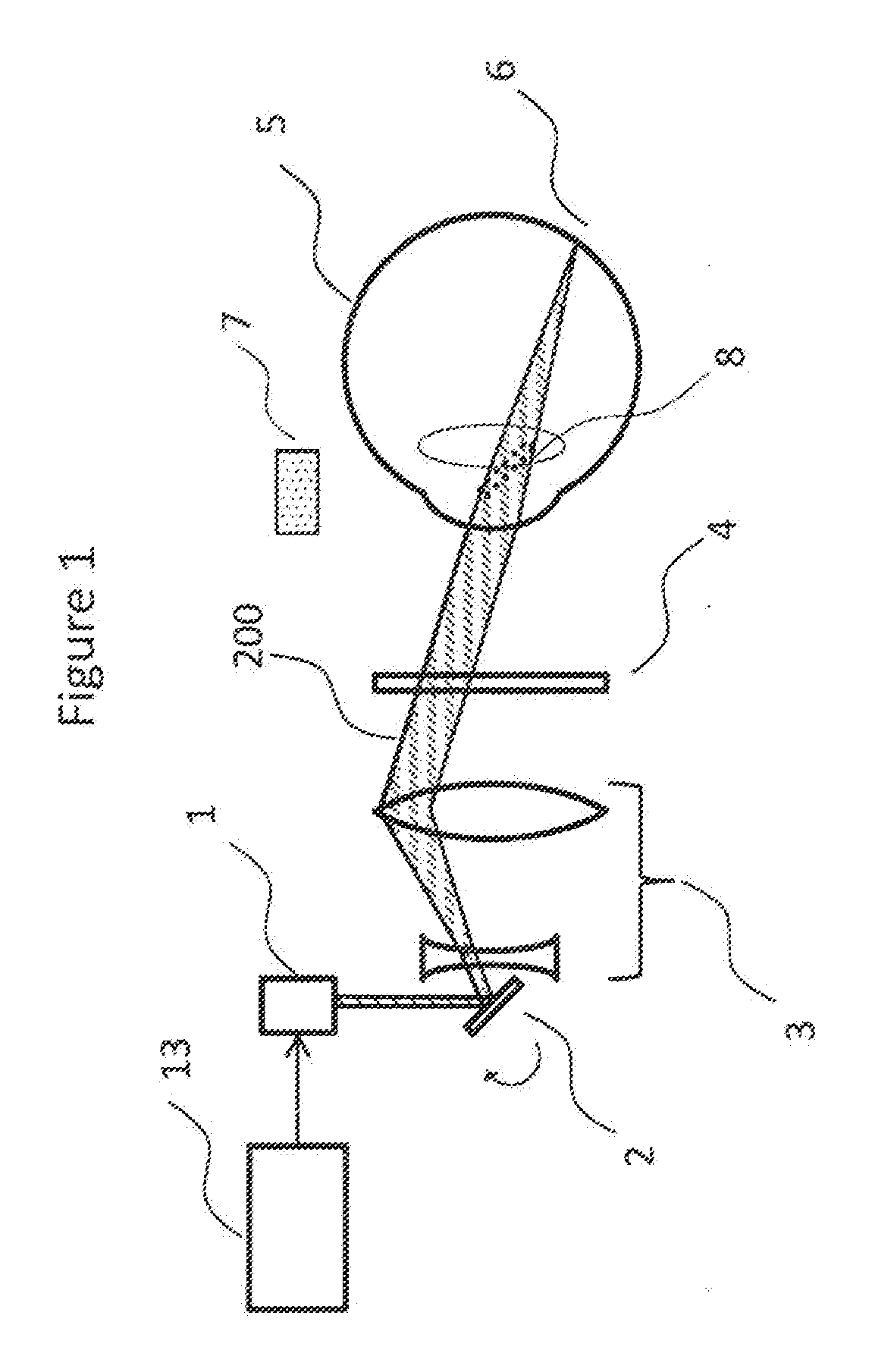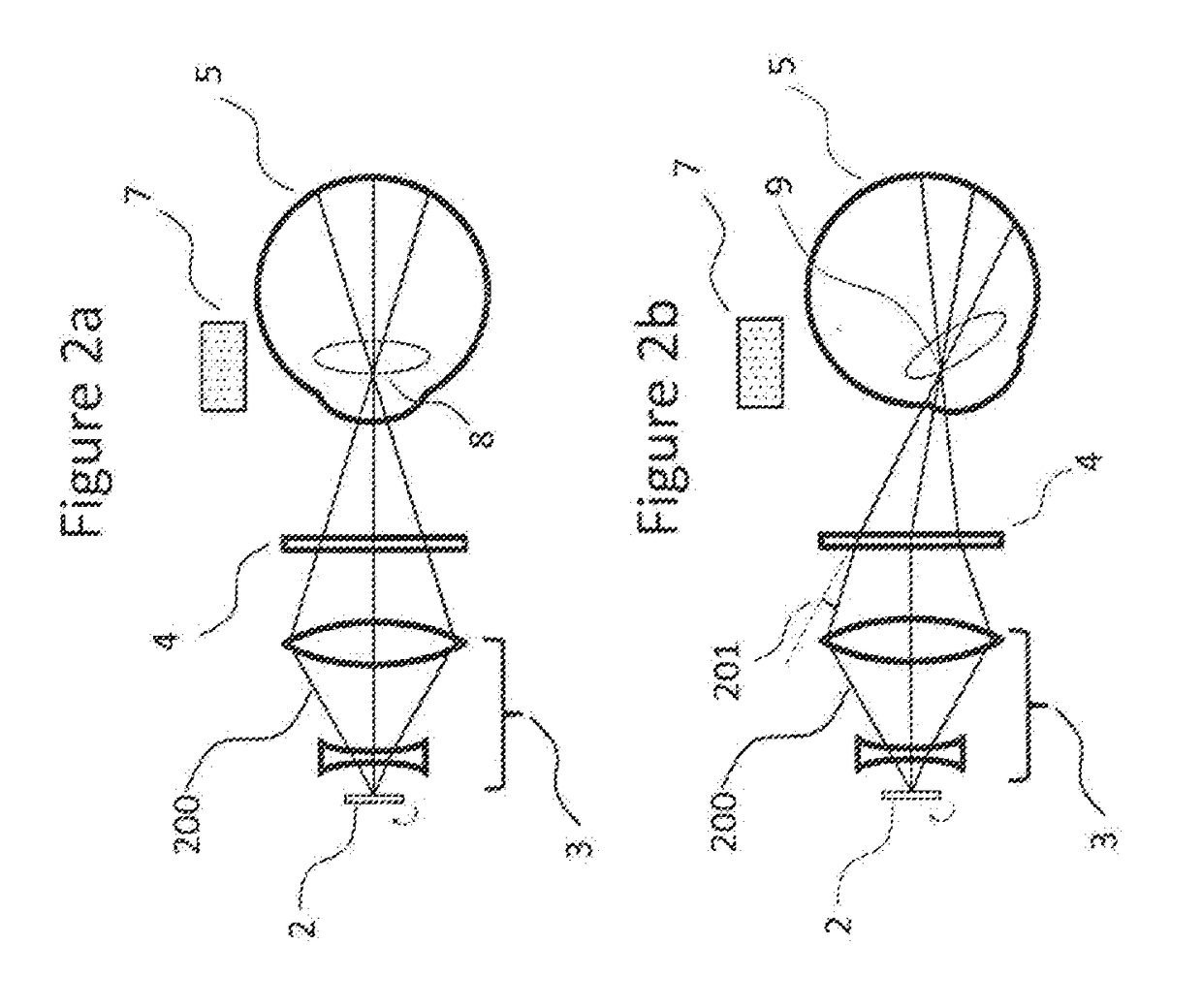Head mounted display using spatial light modulator to move the viewing zone
a technology of spatial light modulator and head mounted display, which is applied in the field of wearable displays, can solve the problems of large space between the eyepiece and the display module, large eyepiece and display module space, and large device bulk, so as to achieve more durable and more resistant to shocks
- Summary
- Abstract
- Description
- Claims
- Application Information
AI Technical Summary
Benefits of technology
Problems solved by technology
Method used
Image
Examples
1st embodiment
1st Embodiment
[0095]The first embodiment of this invention is shown in FIGS. 1-3. The device is a head mounted display. In exemplary embodiments, the head mount display is a wearable device that includes a light source and a display unit. The display unit includes an image engine that controls the light source to generate image content for display, and a plurality of optical elements configured to direct the image content into a viewing zone. An eye monitor measures information pertaining to an eye configuration of a user wearing the wearable device, wherein the image content is visible to the user when the eye is aligned with respect to the viewing zone. A spatial light modulator (SLM) is configured to move a position of the viewing zone based on the eye configuration information measured by the eye monitor.
[0096]FIG. 1 shows the device's main components at one moment in time. This embodiment's system includes a laser 1, scanning mirror 2, several fixed lenses 3, a spatial light mo...
2nd embodiment
2nd Embodiment
[0106]The second embodiment is shown in FIGS. 4a-c, where lens array 20 including a plurality of lenslets is added to the system. FIG. 4a shows the HMD functioning as a multiple eye point retinal scanning system. Each lenslet from the lens array creates a separate eye point (22a-c) unshifted by the SLM 21 in FIG. 4a. In other words, each lenslet in the array directs the image content into a separate eyepoint corresponding to a respective viewing zone. An image will be visible as long as the user's pupil is placed at or aligned with one of these eye points. The inclusion of the SLM 21 not only makes the system capable of moving a single eye point, but could also change the position of individual eye points.
[0107]When combined with eye configuration information obtained from the eye monitor, the separation between these eye points can be varied to accommodate for the varying pupil size of users such that only one eye point enters the eye at any time. For example, if a us...
3rd embodiment
3rd Embodiment
[0115]FIGS. 6a-b shows the third embodiment where an SLM is employed in a light field HMD. FIG. 6a shows a light field HMD which includes an SLM 32 and a display unit. The display unit further includes an image engine 30 and fixed optics 31. The display engine 30 is an OLED screen but may also be any pixelated image display panels such as an LCD display. The fixed optics may be configured as a lens array. The light field HMD has a finite viewing zone 207a where the full image is only viewable when the eye is placed within this zone. Depending on the ergonomics of the user, it is likely that his eyes will not be placed in the optimal position of the zone. Hence the SLM can be used to change the location or distance from the image panel (206a-b) and size (207a-b) of this viewing zone depending on the eye configuration information obtained from the eye monitor.
PUM
 Login to View More
Login to View More Abstract
Description
Claims
Application Information
 Login to View More
Login to View More - R&D
- Intellectual Property
- Life Sciences
- Materials
- Tech Scout
- Unparalleled Data Quality
- Higher Quality Content
- 60% Fewer Hallucinations
Browse by: Latest US Patents, China's latest patents, Technical Efficacy Thesaurus, Application Domain, Technology Topic, Popular Technical Reports.
© 2025 PatSnap. All rights reserved.Legal|Privacy policy|Modern Slavery Act Transparency Statement|Sitemap|About US| Contact US: help@patsnap.com



